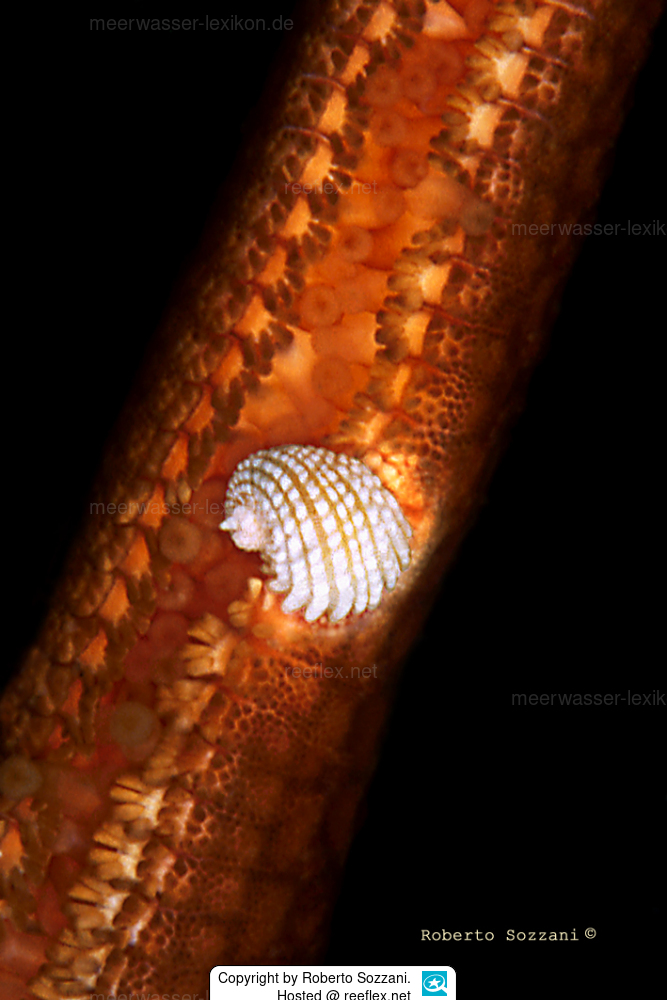Info
Very special thanks for the first photo of the parasite Thyca stellasteris to Roberto Sozzani, Italy.
Roberto has take his photo on a sea star at Satonda Island, Indonesia.
Thomas Tögel in a report on Korallenriff.de
In this case it was not, as I had erroneously assumed, a mussel, but a snail.
And with the given probability that this snail could come from the family EULIMIDAE, a small parasitic snail called Thyca, I started looking again.
Of course I now wanted to know more, also with regard to the parastism of this snail, which actually looks rather interesting, especially when it is looking for food with its black proboscis.
Unfortunately, there is not much to be found on this genus, apart from the numerous pictures, and so I made a picture of this snail from the little information available to me, the diet and the description.
In contrast to most snail species, they have a cap-shaped shell, more reminiscent of a mussel with numerous ribbing.
These Thyca snails are often found on the underside of starfish, especially Linckia species, where they live in a parasitic stage.
Here they usually sit on or next to the starfish's ambulacral groove and stick their proboscis into it, sucking up the host's tissue and body fluid.
These snails are usually found in pairs, but can also densely occupy the host.
Even though the Thyca snail does not cause life-threatening damage to the host through its parasitic infestation, it does have a negative effect on well-being, reproduction and, in the case of heavy infestation, on lifespan.
However, not only starfish are infested, but also on hair stars, sea cucumbers, mussels, sea urchins and snails these sessile animals can be found.
Synonym: Thyca (Thyca) stellasteris Koehler & Vaney, 1912
Roberto has take his photo on a sea star at Satonda Island, Indonesia.
Thomas Tögel in a report on Korallenriff.de
In this case it was not, as I had erroneously assumed, a mussel, but a snail.
And with the given probability that this snail could come from the family EULIMIDAE, a small parasitic snail called Thyca, I started looking again.
Of course I now wanted to know more, also with regard to the parastism of this snail, which actually looks rather interesting, especially when it is looking for food with its black proboscis.
Unfortunately, there is not much to be found on this genus, apart from the numerous pictures, and so I made a picture of this snail from the little information available to me, the diet and the description.
In contrast to most snail species, they have a cap-shaped shell, more reminiscent of a mussel with numerous ribbing.
These Thyca snails are often found on the underside of starfish, especially Linckia species, where they live in a parasitic stage.
Here they usually sit on or next to the starfish's ambulacral groove and stick their proboscis into it, sucking up the host's tissue and body fluid.
These snails are usually found in pairs, but can also densely occupy the host.
Even though the Thyca snail does not cause life-threatening damage to the host through its parasitic infestation, it does have a negative effect on well-being, reproduction and, in the case of heavy infestation, on lifespan.
However, not only starfish are infested, but also on hair stars, sea cucumbers, mussels, sea urchins and snails these sessile animals can be found.
Synonym: Thyca (Thyca) stellasteris Koehler & Vaney, 1912







 Roberto Sozzani, Italien
Roberto Sozzani, Italien


